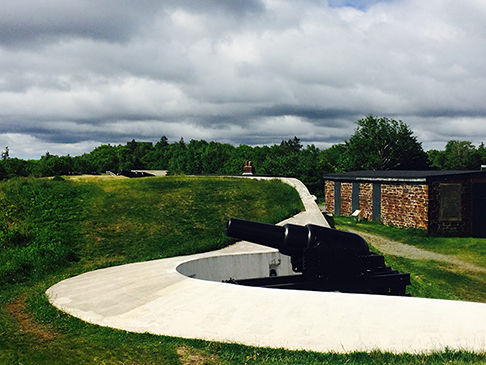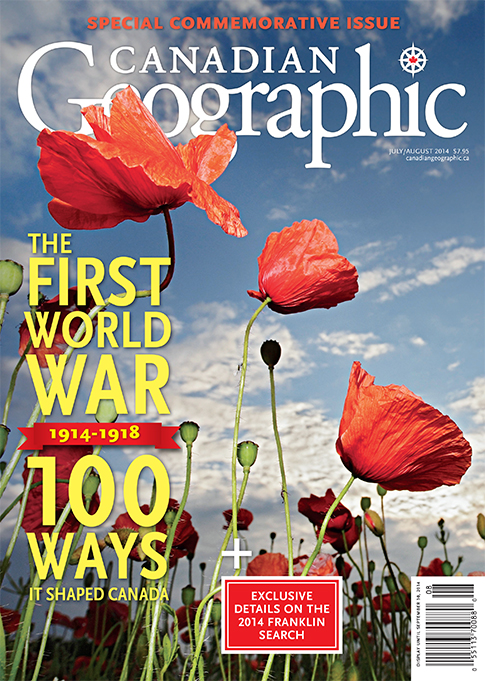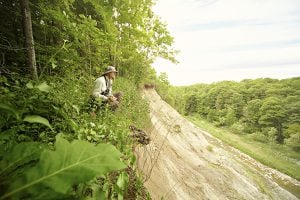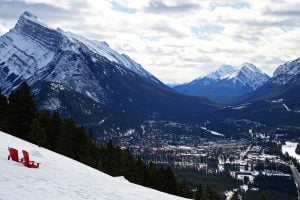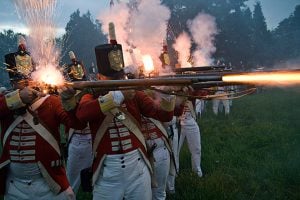The First World War shaped Canada into the country it is today. To commemorate Canadians’ First World War heritage, Parks Canada operates a number of national historic sites and national parks that provide visitors insight into the war effort and its lasting impacts. The following is a list of commemorative places relating to the First World War. Visit pc.gc.ca for more information.
Signal Hill National Historic Site, Nfld.
From the 18th century to the Second World War, Signal Hill was used for military observation and communication. During the First World War, Fort Waldegrave was guarded by a contingent of Newfoundland Legion of Frontiersmen.
Carleton Martello Tower, Saint John, N.B.
More than 50 deserters from the 69th Canadian Infantry Battalion were housed in the tower, which was made into a detention centre during the Great War.
Halifax Defence Complex, Halifax, N.S.
The complex illustrates the shore defenses developed at Halifax between the 18th century and the Second World War. It was the main shipping point to Europe and, during the First World War, was where troops last stepped on Canadian soil before going overseas, and where they first stepped in Canada upon returning home.
Halifax Citadel
From September 8, 1914 to October 3, 1918, the citadel was used as an internment camp for enemy aliens under the War Measures Act.
Georges Island
Georges Island was used as part of the military defence of the Halifax Harbour during the First World War.
Fort McNab National Historic Site
Situated on McNabs Island at the mouth of the Halifax Harbour, Fort McNab National Historic Site was used as a military observation and defensive post during the First World War.
York Redoubt
York Redoubt is located on a large clearing at the mouth of the Halifax Harbour opposite McNabs Island. There are 27 buildings in total, including a searchlight and gun battery close to sea level, which helped defend the harbour during the war.
Marconi National Historic Site, Glace Bay, N.S.
This is the site of the first telegraph sent and received across the Atlantic in 1902. Transatlantic telegraphy was integral to First World War communication between the home front and the front lines.
Alexander Graham Bell National Historic Site, Baddeck, N.S.
Bell, a prolific inventor, partnered with four individuals, including Douglas McCurdy, in the Aerial Experiment Association to develop the Silver Dart (1909), the first powered, heavier-than-air flying machine in Canada. The Silver Dart was used in military drills that year, but was later damaged beyond repair.
Battle of the Châteauguay National Historic Site, Allan’s Corners, Que.
Charles-Michel d’Irumberry de Salaberry was a respected French Canadian officer for the British army and his victory at the Battle of Châteauguay during the War of 1812 was still a source of pride for French Canadians at the time of the First World War. Images of de Salaberry and his famous battle were used on recruiting posters in Quebec at that time.
Quebec Garrison Club National Historic Site, Quebec City
Canadian officers and influential civilians used the club as a social and professional gathering place during the First World War.
Lachine Canal National Historic Site, Montreal
Completed in 1825, the Lachine Canal continued to be a major shipping route between the Great Lakes and the lower St. Lawrence River throughout the First World War. At its peak, 15,000 ships carrying goods to and from Canada passed through the transportation route.
Chambly Canal National Historic Site, Chambly, Que. and Saint-Ours Canal National Historic Site, Saint-Ours, Que.
These canals were part of the First World War transportation network between the Lake Champlain and the St. Lawrence River. It helped facilitate the shipment of coal, an important source of energy for ships and troops at the time, from Pennsylvania to Sorel, Que.
Grosse Île and the Irish Memorial National Historic Site, Grosse Île, Que.
After the First World War, Irish immigrants sought refuge in Canada and most likely passed through the quarantine station at Grosse Île. This site commemorates Grosse Île’s importance to the development of Canada’s public health system as well as the hardships faced by Irish immigrants coming to Canada for a better life.
Fortifications of Quebec National Historic Site, Quebec City
The Dominion Arsenal in Artillery Park played a major role in the war effort for both world wars. Thousands of people, including women, were employed at the arsenal, which produced small arms ammunition.
Fort George National Historic Site and Butler’s Barracks National Historic Site, Niagara-on-the-Lake, Ont.
Butler’s Barracks and Fort George, called Camp Niagara, served as a military training camp for 14,000 soldiers from 1914-1918. The camp also served as the winter training grounds for the Polish Army, in which Canadians and Americans of Polish descent prepared to rebuild Poland after the Great War.
Battlefield of Fort George National Historic Site, Niagara-on-the-Lake, Ont.
During the First World War, Fort George, called Camp Niagara, was used as a military training camp. The existing rifle range on the battlefield was used to train Canadian Militia as were the newly-built grenade, rocket, small arms and machine gun ranges.
Fort Mississauga National Historic Site, Niagara-on-the-Lake, Ont.
Incorporated into Camp Niagara, a First World War military training, troops were housed in a tent city. Traces of soldiers’ practice trenches can still be seen on the grounds.
Bethune Memorial House National Historic Site, Gravenhurst, Ont.
Dr. Norman Bethune is commemorated for his extensive overseas medical service in war-torn countries, including Spain during the Spanish Civil War (1936-37) and China during the Second Sino-Japanese War (1937-1945). During his early life, Bethune also served in the First World War as a stretcher-bearer.
Fort Wellington National Historic Site, Prescott, Ont.
The fort became a First World War armoury for local militia and a training ground for new recruits.
Sault Ste. Marie Canal National Historic Site, Sault Ste. Marie, Ont.
Located between Lake Huron and Lake Superior, the canal was an integral part of the water transportation network that moved goods across the country during the First World War.
Fort Henry National Historic Site, Kingston, Ont.
Under the War Measures Act, this fort was superficially repaired and used as a First World War internment camp for enemy aliens.
The Forks National Historic Site, Winnipeg
From 1914-16, Upper Fort Garry served as an internment camp for enemy aliens.
Motherwell National Historic Site, Man.
This site commemorates W.R. Motherwell who served as Saskatchewan’s Minister of Agriculture from 1905-17 and promoted better access to information for farmers. 1n 1917, he spoke out against conscription believing that young farmers were more important to the home front than to battlefields.
Banff National Park, Alta.
Held at a First World War interment camp at Castle Mountain, enemy aliens provided much of the cheap labour to build Canada’s western national parks. They improved facilities at Banff as well as built roads and other infrastructure.
Jasper National Park, Alta.
Housed at an internment camp, enemy aliens improved the roads in the park. Jasper has also given First World War commemorative names to a number of peaks and topographic features.
Bar U Ranch National Historic Site, Longview, Alta.
Like all farms and ranches in Canada during the First World War, Bar U Ranch produced food for troops. The ranch also bred Percheron horses used by soldiers at the front lines.
First Oil Well in Western Canada National Historic Site, Waterton Lakes National Park, Alta.
During the war, oil was used for military vehicles and planes and was first established as a strategic commodity.
Waterton Lakes National Park, Alta.
The names of mountain peaks at this park commemorate First World War battles such as Vimy, Dardanelles and the Bosporus.
Mount Revelstoke National Park, B.C.
An internment camp was built halfway up Mount Revelstoke in September of 1915, but was abandoned that winter due to harsh conditions.
Yoho National Park, B.C.
This park housed Camp Otter, one of many internment camps for enemy aliens during the First World War.
Fort Rodd Hill and Fisgard Lighthouse National Historic Sites, Colwood, B.C.
This site was used for coastal defense during both world wars and the lighthouse was used as a physical landmark for daytime navigation.
Gulf of Georgia Cannery National Historic Site, B.C.
This site commemorates Canada’s West Coast fishing industry. The cannery was also a key food supplier for troops during the First World War.


